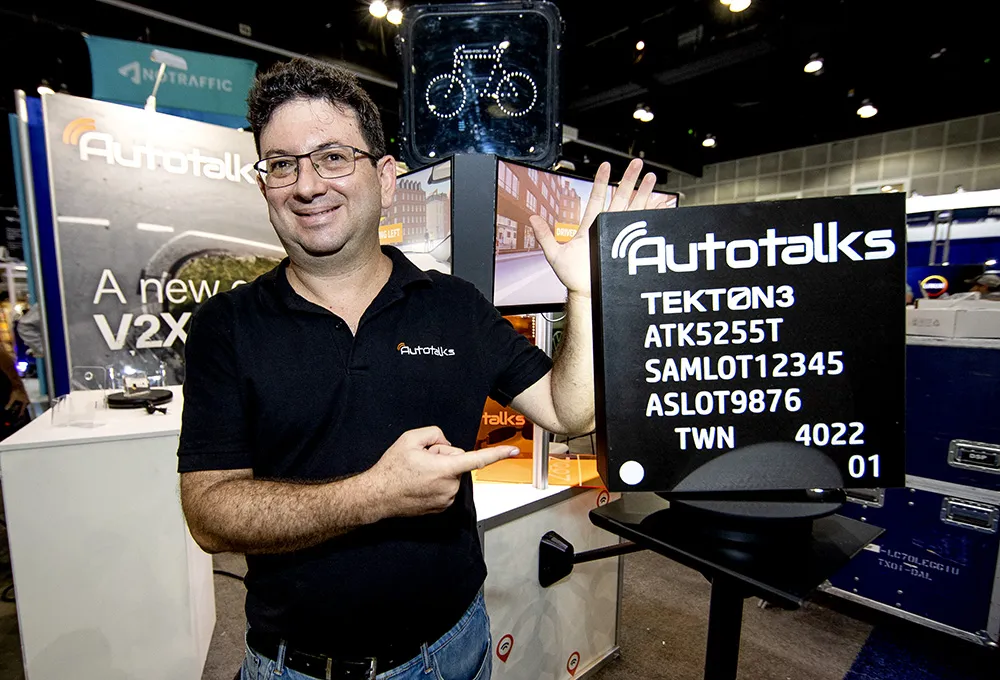In a partnership that they say will advance intelligent transportation systems (ITS) and car-to-X communications, US-headquartered IT provider Cisco and Dutch semiconductor supplier NXP Semiconductors are to invest in wireless communications specialist Cohda Wireless. The three companies will apply their collective expertise and technologies to help automotive OEMs, suppliers, enterprises and consumers to connect vehicles with ITS infrastructure. This will be spearheaded by producing the first automotive-q
January 7, 2013
Read time: 3 mins
In a partnership that they say will advance intelligent transportation systems (ITS) and car-to-X communications, US-headquartered IT provider 1028 Cisco and Dutch semiconductor supplier 566 NXP Semiconductors are to invest in wireless communications specialist 6667 Cohda Wireless.
The three companies will apply their collective expertise and technologies to help automotive OEMs, suppliers, enterprises and consumers to connect vehicles with ITS infrastructure. This will be spearheaded by producing the first automotive-qualified IEEE 802.11p products for onboard and road side units that are ready for C2C and C2I deployments across the globe.
Cohda’s technology enhances wireless communications to quality levels far beyond commercial off-the-shelf IEEE 802.11p transceivers, allowing cars to more effectively ‘see’ through obstacles or around corners. NXP, as a supplier of car radio semiconductors and security chips, brings its software-defined radio platform and ensures industry-ready data security, cost efficiency, form factor, power consumption, and performance. Together, Cisco, NXP, and Cohda will develop a complete market-ready solution for the automotive and ITS industry.
NXP will exclusively licence the Cohda 802.11p technology together with its chipsets as a one-stop shop to automotive customers. Cohda will be NXP’s preferred partner for automotive 802.11p reference designs.
Onboard and road side units developed using technologies from the three companies have been tested to global standards in major field trials. In August 2012, the Safety Pilot Model Deployment trial by the324 US Department of Transportation was initiated, and other major field trials include Safety and Intelligent Mobility – Test Field Deutschland (simTD) in Germany, Système Coopératif Routier Expérimental Français (ScoreF) in France, and Electronic Road Pricing (ERP2) in Singapore.
Says Maciej Kranz, vice-president and general manager of the connected industries group at Cisco, “We believe that amazing things can happen when you connect the previously unconnected, and smarter vehicles are one of the many ways in which we will fully experience the ‘internet of everything’. The onboard solution is one element of an end-to-end architecture that integrates with Cisco’s off-board network infrastructure. Our ultimate aim is to bring about a safer, more enjoyable, and more productive travel experience, enabled by the network.”
“We make Car-to-X work for the moving car. Our patented technology enhances radio reception; the car can see around corners or through obstacles when needed,” said Cohda Wireless CEO Paul Gray. “Combining our special expertise in wireless automotive communication with that of long-established automotive companies like NXP and a global player like Cisco is a logical next step to further grow our reach into the automotive industry.”
Kurt Sievers, executive vice-president and general manager of the automotive business at NXP Semiconductors commented, “Our market-proven multi-standard software-defined radio is the ideal platform for C2X communication. Combined with Cohda’s superior wireless communication algorithms and Cisco’s network intelligence we will achieve the performance, system cost and compactness that car makers and tier-1 suppliers are asking for. Our combined technology will help to avoid traffic accidents, save lives and reduce CO2 emissions.”
The three companies will apply their collective expertise and technologies to help automotive OEMs, suppliers, enterprises and consumers to connect vehicles with ITS infrastructure. This will be spearheaded by producing the first automotive-qualified IEEE 802.11p products for onboard and road side units that are ready for C2C and C2I deployments across the globe.
Cohda’s technology enhances wireless communications to quality levels far beyond commercial off-the-shelf IEEE 802.11p transceivers, allowing cars to more effectively ‘see’ through obstacles or around corners. NXP, as a supplier of car radio semiconductors and security chips, brings its software-defined radio platform and ensures industry-ready data security, cost efficiency, form factor, power consumption, and performance. Together, Cisco, NXP, and Cohda will develop a complete market-ready solution for the automotive and ITS industry.
NXP will exclusively licence the Cohda 802.11p technology together with its chipsets as a one-stop shop to automotive customers. Cohda will be NXP’s preferred partner for automotive 802.11p reference designs.
Onboard and road side units developed using technologies from the three companies have been tested to global standards in major field trials. In August 2012, the Safety Pilot Model Deployment trial by the
Says Maciej Kranz, vice-president and general manager of the connected industries group at Cisco, “We believe that amazing things can happen when you connect the previously unconnected, and smarter vehicles are one of the many ways in which we will fully experience the ‘internet of everything’. The onboard solution is one element of an end-to-end architecture that integrates with Cisco’s off-board network infrastructure. Our ultimate aim is to bring about a safer, more enjoyable, and more productive travel experience, enabled by the network.”
“We make Car-to-X work for the moving car. Our patented technology enhances radio reception; the car can see around corners or through obstacles when needed,” said Cohda Wireless CEO Paul Gray. “Combining our special expertise in wireless automotive communication with that of long-established automotive companies like NXP and a global player like Cisco is a logical next step to further grow our reach into the automotive industry.”
Kurt Sievers, executive vice-president and general manager of the automotive business at NXP Semiconductors commented, “Our market-proven multi-standard software-defined radio is the ideal platform for C2X communication. Combined with Cohda’s superior wireless communication algorithms and Cisco’s network intelligence we will achieve the performance, system cost and compactness that car makers and tier-1 suppliers are asking for. Our combined technology will help to avoid traffic accidents, save lives and reduce CO2 emissions.”








